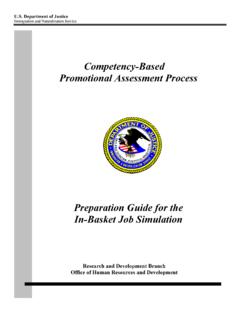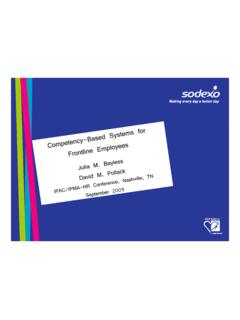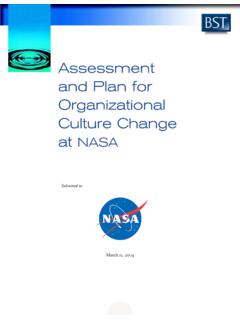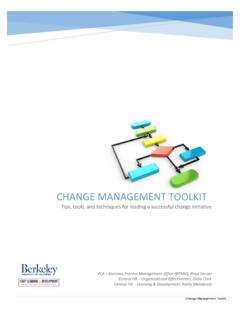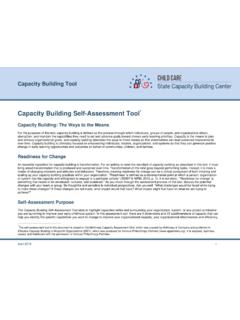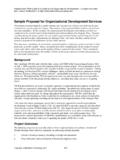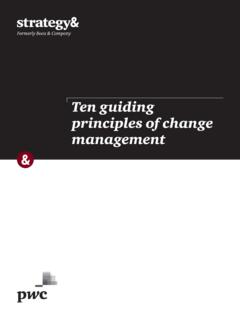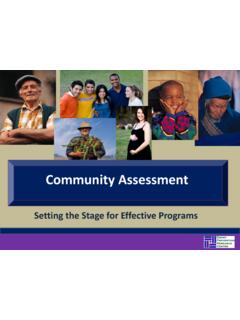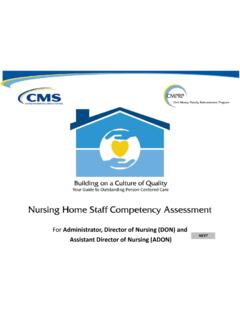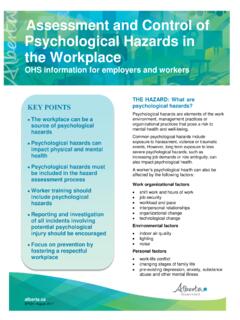Transcription of An Introduction to Organizational Maturity Assessment
1 International Public Management Association Assessment CouncilAn Introduction to Organizational Maturity Assessment : Measuring Organizational CapabilitiesSelena Rezvani, Define and describe an Organizational Maturity Model (OMM) Identify ways in which OMMs are developed and used Identify areas of further study and advancementWhat is a Maturity Model? A collection of reliable, proven processes focused on a specific discipline Five-step framework ranges from basic to sophisticated practices Organizations are objectively rated on a scale of 1-5 and given a scoreA roadmap for Organizational improvement-adapted from Carnegie Mellon UniversityWhy Measure Organizational Processes?If you can t measureit, you can t understandit. If you can t understandit, you can t you can t controlit, you can t HarringtonThe Improvement ProcessUnderstandMeasureControlImproveOb stacles to Organizational Improvement Best practices are not used Investment in initiatives with little return on investment Companies struggle to maintain capabilities amidst turnover, retirement, and successionManyCompetency assessmentsexist that focus on the while Organizational maturityassessmentsfocus on practices and processesA Brief History of OMMs Conceptual basis in quality improvement and process control Software Engineering Institute developed a Capability Maturity Model for software engineering (early 1990s) Today, Maturity models address a wide range of topics.
2 Project Management Business Analysis Knowledge Management Branding Product Development Mentoring Leadership Risk Management Personnel ManagementAdaptiveOpportunisticSynthesiz edProactiveAgileAlignedDisciplinedPredic tableQuantitatively managedDefinedStructureMeasuredCompetent EmergingManagedStandardizedIsolatedRepea tableAd hocInitialChaoticInconsistentInformalDoc umentedIntegratedStrategicOptimized12345 Five Stage Maturity ModelApproaches to OMMs OMMs can either be staged or continuous Staged: Lower level processes must be in place before higher levels can be attained Continuous: Processes can be put in place at any time12345 Effectiveness Evidence Study of SEI s software engineering Maturity model effects (n=35 companies) Median return on investment of 4:1 Median improvements in:Cost34%Schedule50%Productivity61%Qual ity48%Customer Satisfaction14%Benefits of OMMs Inventory of current capabilities Baseline for measuring improvement Documents the need for change Common language Shared vision Fosters a culture of excellenceSets the stage for Organizational changeSituational Use of OMMs Give top leadership insight into day-to-day practices Make informed decisions on workforce development & training Focus attention on specific capabilities to be retained Decide what new initiatives need to be developed or launched Inform suppliers/customers about caliber of organizationDeveloping & Implementing an OMMHow are OMMs Developed?
3 A functional area, role or a body of knowledge, including best practices, standards, and effective processes Existing industry standards Governmental guidance Subject matter the Maturity model by defining key processes or components over 5 the OMM through an Assessment or consulting prioritized recommendations and document improvementsImplementation ProcessKey considerations Self- Assessment versus an outside, or independent, Assessment Validated responses versus un-validated the and analyze findings and Organizational improvementWeek 1: Planning and KickoffWeek 2: Survey and InterviewsWeek 3: Findings and RecommendationsIdentified 3-5 representative projectsScheduled Assessment activitiesHeld kickoff meetingSurveyed project management practicesValidated results through interviews, focus groups, and archive reviewsBuilt support for implementing recommendationsDrafted, prioritized, and communicated findings Developed specific, tailored, actionable recommendationsTypical Maturity Assessment Timeline Award winning utility company Not satisfied with current PM capability Needed to improve PM to stay competitive Tried to implement consistent PM practices for 3 yearsBeforeAfter Reports entered in 12 different formats Disjointed PM functions across units and levels Documented the need for a single report management system Stronger PMO that coordinates across units and levels Identified PM practices they were doing right Resulted in action plan to advance from Level 2 to Level 3 Case Study.
4 Project Management MaturityAreas for Further Advancement Which disciplines lend themselves best to Maturity models? Which models are most effective at realizing value for the organization? Will model ratings be used more widely as an industry benchmark? Can abbreviated versions of OMMs be used? Is it possible to develop a universal OMM?ConclusionMeasure twice, cut once!Ms. Selena 790-9595, x4025 Appendix: Six SigmaSix Sigma is different than Organizational Maturity and includes: A clear focus on achieving measurable and quantifiable financial returnsfrom any Six Sigma project. An increased emphasis on strong and passionate management leadership and support. A special infrastructure of "Champions", "Master Black Belts", "Black Belts" to lead and implement the Six Sigma approach. A clear commitment to making decisions on the basis of verifiable data, rather than assumptions and guesswork.
